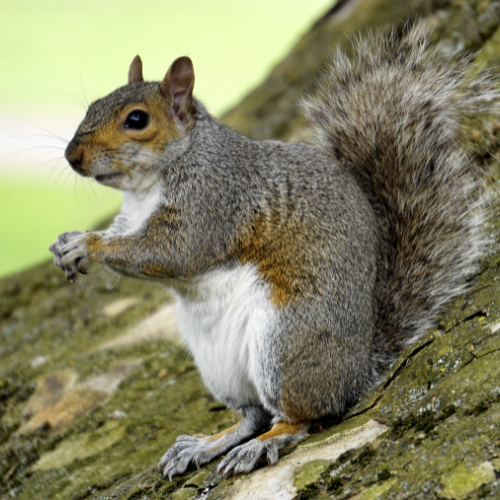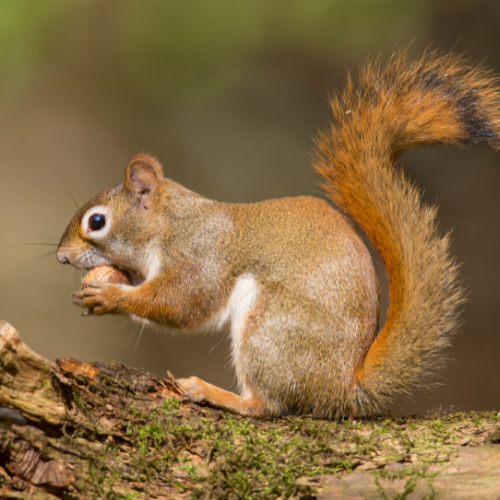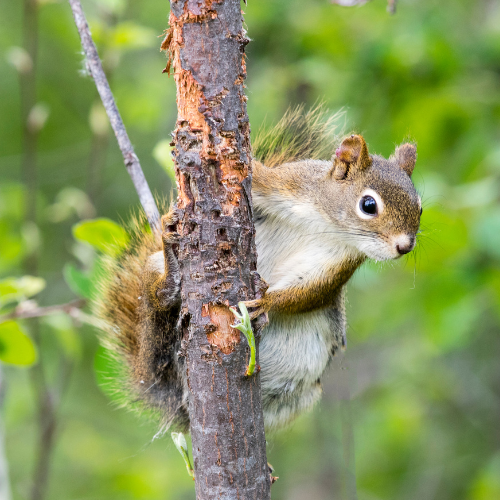Tree Squirrels
Introduction to
Tree squirrels are a common sight in many parts of the world, known for their bushy tails, agility, and acrobatic feats. These lively rodents are often found in forests, urban parks, and residential areas. While they play an important role in ecosystems by dispersing seeds and providing food for predators, tree squirrels can also become a nuisance when they invade homes and gardens. This article explores the recognition, biology, habits, prevention, and professional handling of tree squirrels, offering a comprehensive guide to understanding and managing these energetic animals.
Recognition
Tree squirrels are easily recognized by their large, bushy tails, which they use for balance and warmth. They vary in size depending on the species, with body lengths ranging from 9 to 12 inches and tails adding another 7 to 10 inches. Their fur color can be gray, red, brown, or black, often with lighter underbellies. Tree squirrels have sharp claws and strong hind legs, adapted for climbing and leaping between trees. Common species in North America include the Eastern gray squirrel, the fox squirrel, and the red squirrel. Signs of a tree squirrel presence include scattered nut shells, nests in trees or attics, and chewing damage on structures and plants.
Biology
Tree squirrels belong to the family Sciuridae and are found in various habitats worldwide. They are primarily herbivores, feeding on a diet of nuts, seeds, fruits, and occasionally insects and bird eggs. Tree squirrels have strong teeth that grow continuously, which they keep in check by gnawing on hard objects. They build nests, known as dreys, in tree branches or use cavities in trees for shelter. Tree squirrels typically have one or two breeding seasons per year, with females giving birth to litters of 2 to 6 young after a gestation period of about 44 days. The young are weaned and independent by 10 to 12 weeks of age.
Habits
Tree squirrels are diurnal, being most active during the early morning and late afternoon. They are known for their agility and ability to leap between trees, using their tails for balance. Tree squirrels are territorial and will defend their home ranges from intruders. They communicate through vocalizations, tail movements, and scent marking. In urban areas, tree squirrels often raid bird feeders, gardens, and garbage bins in search of food. They can also cause damage by chewing on electrical wiring, siding, and wooden structures. During the winter, tree squirrels rely on food caches that they have buried during the fall.
Prevention
Preventing tree squirrel infestations involves making your property less attractive to these animals. Install squirrel-proof bird feeders and clean up fallen nuts and seeds regularly. Seal entry points to attics, eaves, and crawl spaces with durable materials like steel mesh or caulk. Trim tree branches that overhang your home to reduce access points. Use squirrel repellents, such as predator urine or spicy sprays, around gardens and plants. Secure garbage bins with tight-fitting lids and avoid leaving pet food outside. Regular maintenance and vigilance are key to preventing tree squirrels from becoming a nuisance.
Professional
If tree squirrels have already invaded your home or property, professional pest control services can provide effective solutions. STL Pest Control offers comprehensive management plans to address tree squirrel infestations. Their experienced technicians will conduct a thorough inspection to identify entry points and areas of activity. They use humane trapping and exclusion techniques to remove squirrels and prevent their return. STL Pest Control also provides advice on habitat modification and preventive measures to ensure a squirrel-free environment. Professional intervention ensures that tree squirrel problems are resolved safely and effectively.



Our Office









